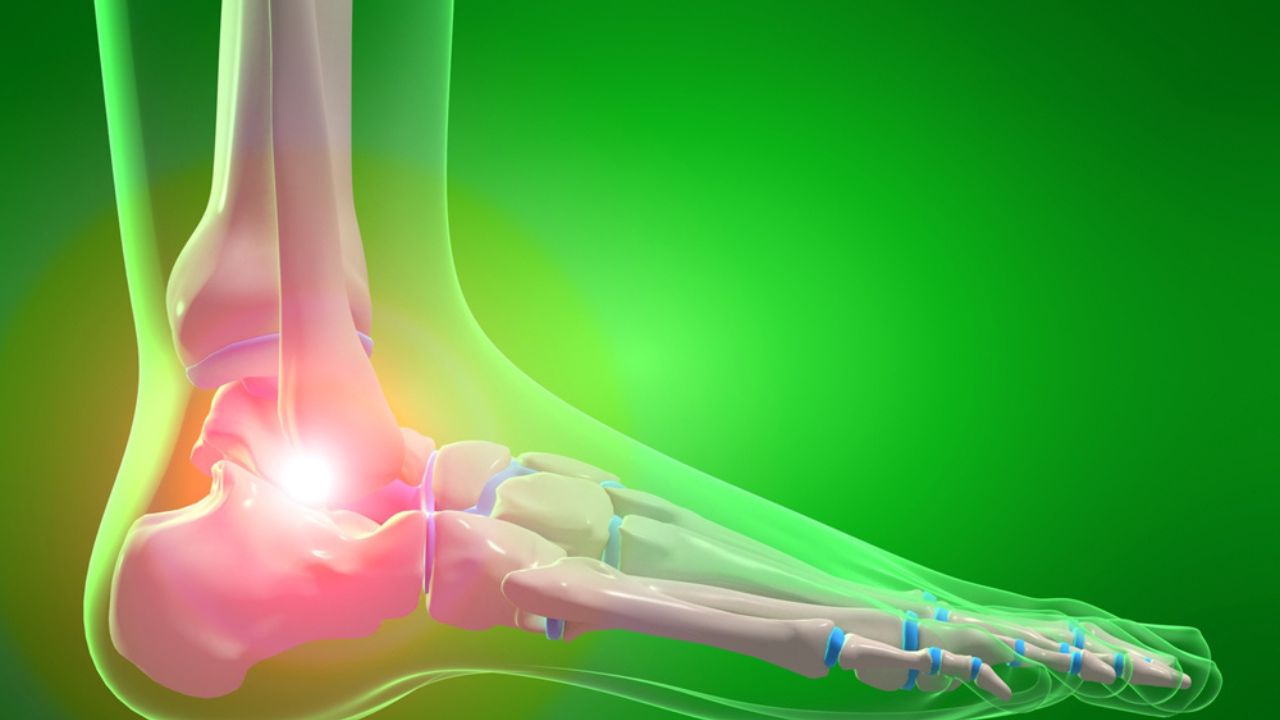
In this article, we present the top 12 essential stretches for athletes, designed to target and effectively stretch every critical muscle.
Whether you are a professional athlete or a fitness enthusiast, incorporating these stretches into your routine can enhance flexibility, prevent injuries, and improve overall performance.
From hamstring and quadriceps stretches to glute and neck stretches, we provide clear directions to help you maximize the benefits of each stretch.
Join us on this journey towards achieving optimal physical freedom.
Hamstring Stretch
The Hamstring Stretch is a vital exercise for athletes looking to improve their flexibility and prevent injuries.
Hamstring flexibility is crucial for athletes in various sports, such as running, soccer, and basketball, as it allows for a greater range of motion and better performance.
This stretch specifically targets the muscles at the back of the thigh, helping to increase their length and flexibility.
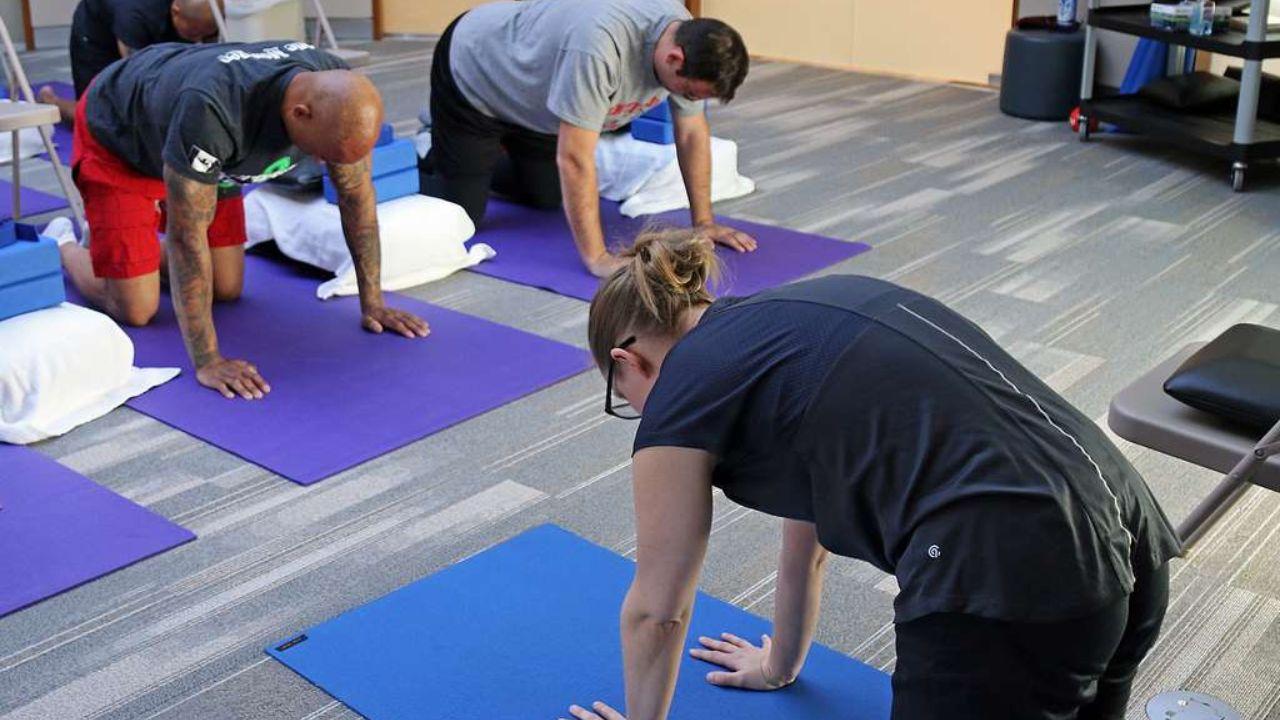
By regularly incorporating this stretch into their routine, athletes can reduce the risk of hamstring injuries, which are common among athletes involved in activities that require sudden bursts of acceleration or quick changes in direction.
Preventing hamstring injuries is essential for athletes who desire freedom in their training and competition, as it allows them to maintain their peak performance and continue pursuing their athletic goals.
Quadriceps Stretch
To effectively stretch the quadriceps, athletes can perform the quadriceps stretch, which involves bending the knee and pulling the foot towards the glutes while maintaining a stable position.
Quadriceps stretching offers several benefits for improved athletic performance. Firstly, it helps to increase flexibility and range of motion in the quadriceps muscles, which are crucial for movements such as running, jumping, and kicking. This increased flexibility can enhance an athlete's speed, power, and agility.
Additionally, quadriceps stretching can help to prevent injuries such as strains and tears by keeping the muscles loose and supple. However, it is important to avoid common mistakes when performing quadriceps stretches. Athletes should ensure that they maintain proper form and alignment, avoid bouncing or jerking movements, and breathe deeply throughout the stretch.
Calf Stretch
One effective calf stretch that athletes can incorporate into their routine is performing ten repetitions of the seated calf stretch using a resistance band. This stretch specifically targets the calf muscles and helps to improve calf muscle flexibility, which is crucial for athletes in various sports.
The seated calf stretch with a resistance band involves sitting on the floor with legs extended and wrapping a resistance band around the balls of the feet. Holding the ends of the band, athletes can then gently pull the band towards them, feeling the stretch in their calves.
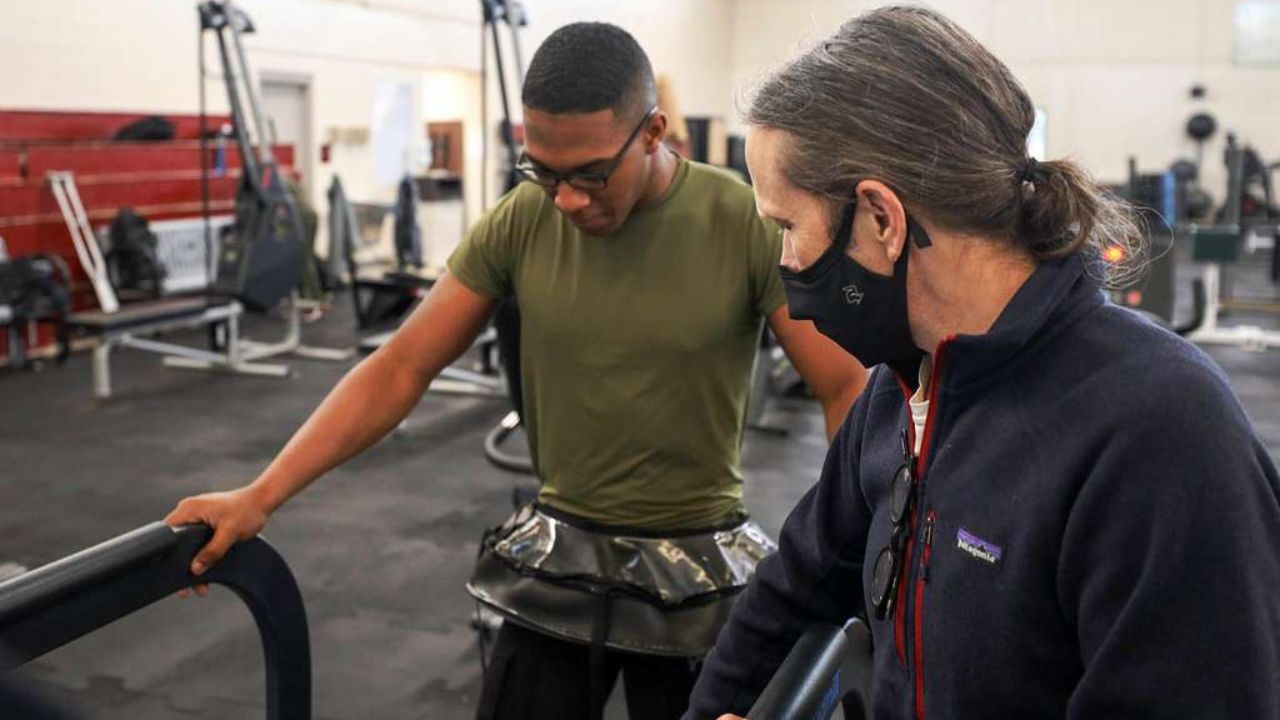
By regularly incorporating this stretch into their routine, athletes can prevent calf muscle injuries and improve their overall performance. Increased flexibility in the calf muscles allows for better range of motion and helps to prevent strains and tears.
Hip Flexor Stretch
During a warm-up or cool-down routine, athletes can benefit from incorporating the hip flexor stretch to enhance flexibility and prevent injuries. Proper hip flexor stretching is of paramount importance for overall athletic performance.
The hip flexors play a crucial role in various movements, such as running, jumping, and kicking. By stretching these muscles, athletes can increase their range of motion, improve their posture, and enhance their athletic performance.
However, it is essential to perform the hip flexor stretch correctly to maximize its benefits. Common mistakes to avoid include not maintaining proper form, rushing through the stretch, and neglecting to engage the core muscles. To get the most out of the hip flexor stretch, athletes should focus on maintaining proper alignment, breathing deeply, and easing into the stretch gradually.
Glute Stretch
The glute stretch is a beneficial exercise for athletes looking to improve hip mobility and prevent lower body injuries. Glute activation and mobility are essential for athletes in various sports, including running, cycling, and weightlifting. This stretch specifically targets the glute muscles, which are responsible for hip extension and rotation. By incorporating glute stretches into their routine, athletes can enhance their overall performance and reduce the risk of injuries such as hip strains or lower back pain.
To perform a glute stretch, start by lying on your back with your knees bent and feet flat on the ground. Cross one ankle over the opposite knee, creating a figure-four shape. Then, gently pull the uncrossed leg towards your chest, feeling a stretch in the glute muscles of the crossed leg. Hold this position for 30 seconds to a minute, and then switch sides.
Regularly incorporating glute stretches into your training routine can help improve your hip mobility, increase glute activation, and ultimately enhance your athletic performance. So, don't neglect this important stretch in your quest for freedom of movement and injury prevention.
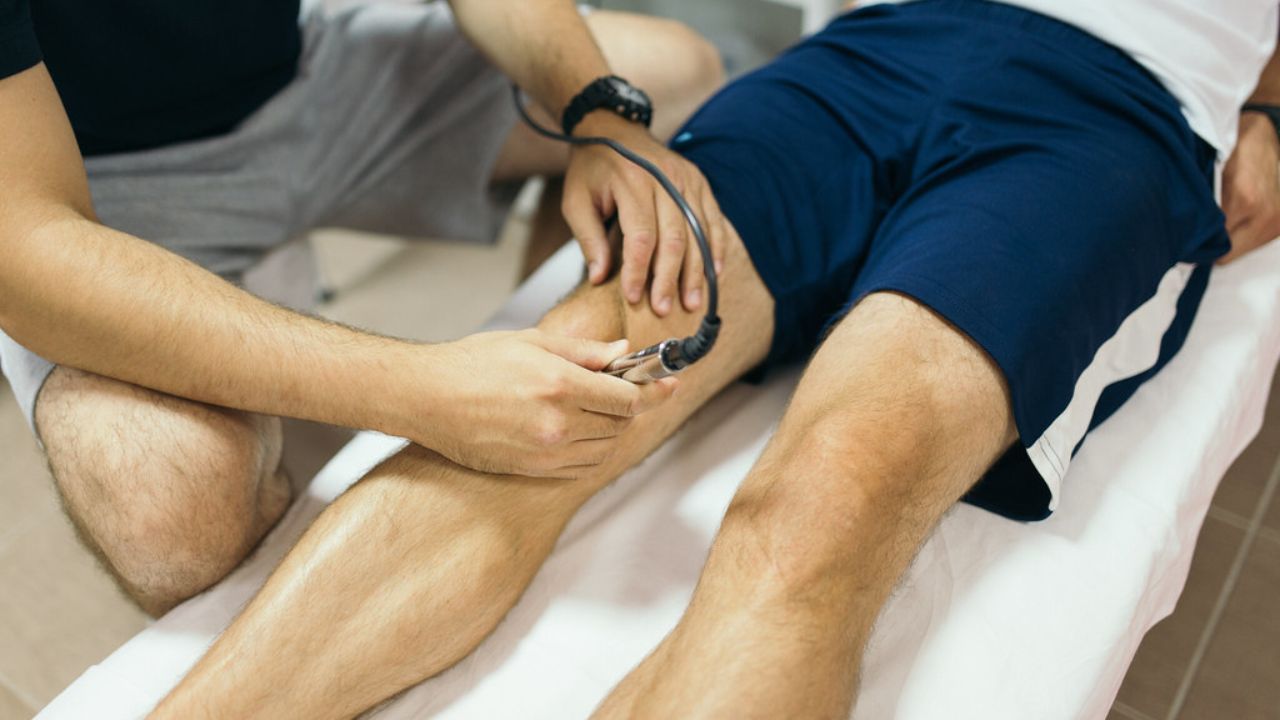
IT Band Stretch
Performing an effective IT band stretch is crucial for athletes looking to alleviate tightness and prevent potential knee and hip injuries.
The IT band, or iliotibial band, is a thick band of connective tissue that runs along the outside of the thigh, from the hip to the knee. It plays a significant role in stabilizing the knee during movement.
IT band injury prevention is vital for athletes who engage in activities that involve repetitive knee flexion and extension, such as running or cycling.
One effective way to stretch the IT band is through foam rolling techniques. By using a foam roller to apply pressure to the IT band, athletes can release tension and tightness in the muscle, promoting flexibility and reducing the risk of injury.
Incorporating regular IT band stretches and foam rolling techniques into a training routine can help athletes maintain optimal performance and prevent potential knee and hip issues.
Lower Back Stretch
Regularly incorporating a gentle lower back stretch can help athletes maintain flexibility and prevent potential injuries. The lumbar stretch is a crucial exercise that targets the muscles of the lower back, providing relief from tightness and promoting spinal extension.
Athletes often experience tightness in the lower back due to the repetitive movements involved in their sports. By incorporating a regular lower back stretch into their routine, athletes can increase range of motion, reduce muscle imbalances, and improve overall performance.
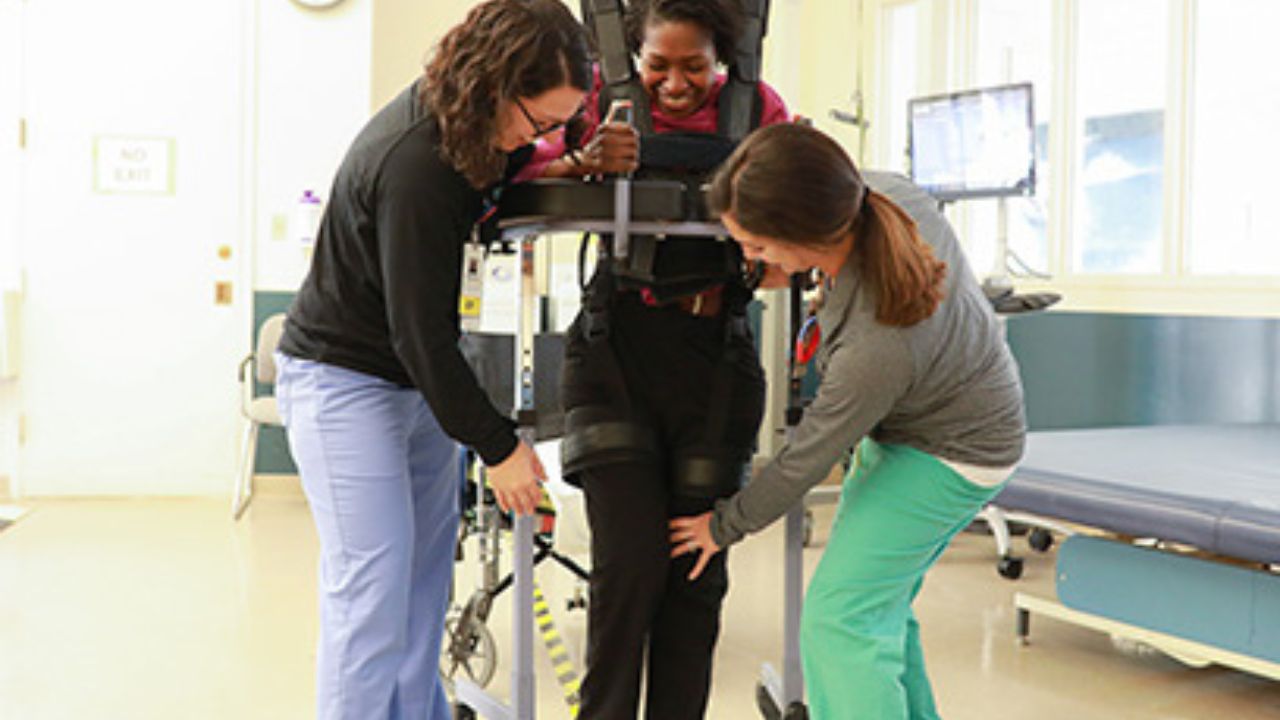
The lumbar stretch involves gently arching the back while lying on the floor or a mat, allowing the spine to extend and releasing tension in the lower back muscles. This stretch helps to maintain a healthy range of motion in the spine and prevents the development of muscular imbalances that can lead to injuries.
Shoulder Stretch
Five essential stretches are necessary, but it is important to include a shoulder stretch to target the critical muscles in athletes.
Shoulder mobility exercises can greatly improve an athlete's performance and prevent injuries. Here are some benefits of shoulder stretching:
Increased Range of Motion: Shoulder stretches help improve flexibility and increase the range of motion in the shoulder joint. This allows athletes to perform a wider variety of movements with ease.
Improved Posture: Regular stretching of the shoulders can help correct poor posture caused by tight muscles. This leads to better alignment of the spine and reduces the risk of developing shoulder and neck pain.
Injury Prevention: By increasing the flexibility and strength of the shoulder muscles, athletes can reduce the risk of common shoulder injuries such as rotator cuff strains and impingement syndrome.
Enhanced Performance: Having flexible and mobile shoulders allows athletes to perform at their best, whether it's throwing a ball, swinging a racket, or lifting weights. It enables freedom of movement and helps athletes reach their full potential.
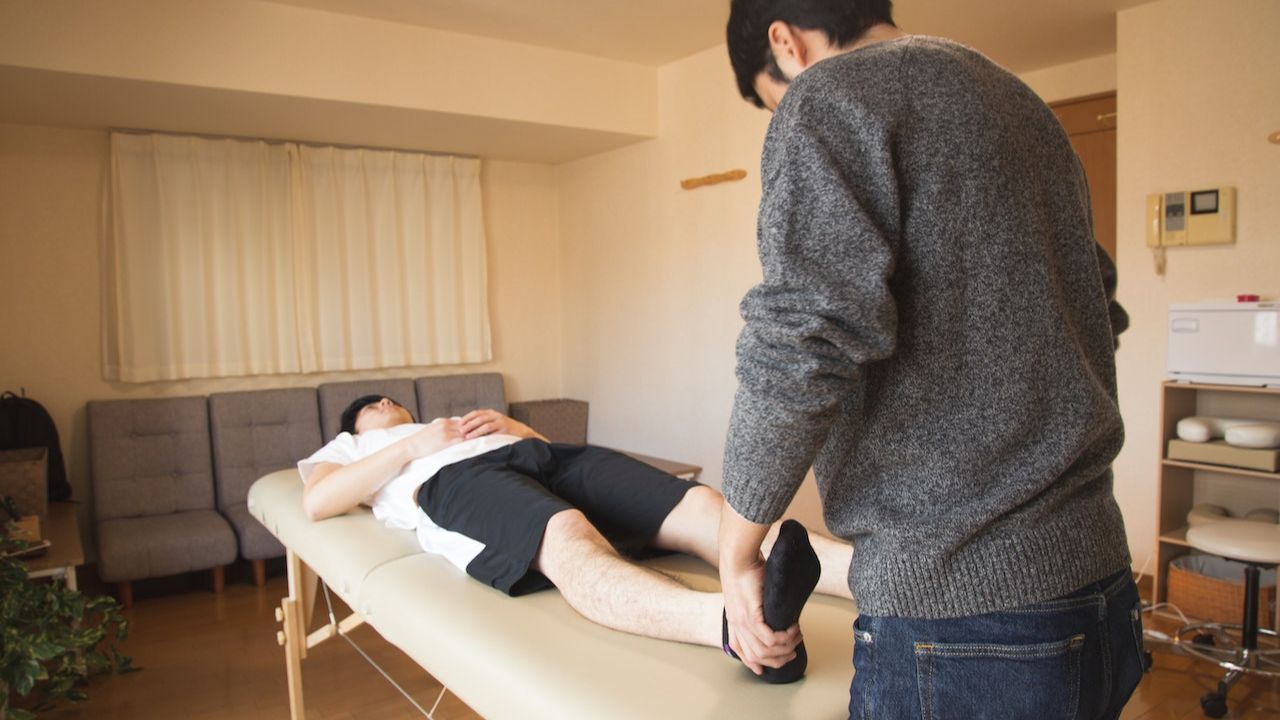
Chest Stretch
Several key stretches are crucial for athletes to target the muscles in their chest and maintain optimal performance. The importance of proper chest stretching techniques cannot be overstated. Chest stretches help to improve flexibility, increase range of motion, and prevent injuries. They also help to alleviate muscle tension and soreness, allowing athletes to perform at their best.
When performing chest stretches, it is important to avoid common mistakes that can lead to ineffective stretching or even injury. One common mistake is overstretching, which can strain the muscles and cause pain. It is important to stretch within a comfortable range of motion and gradually increase the intensity of the stretch over time. Another mistake is neglecting to warm up before stretching. Warming up prepares the muscles for stretching and reduces the risk of injury. Additionally, holding the stretch for too long or bouncing while stretching should be avoided.
Tricep Stretch
During a tricep stretch, athletes should focus on extending their arms and reaching towards the floor while maintaining proper form and avoiding any discomfort. This stretch is crucial for tricep mobility and can greatly benefit athletes in their tricep strength training.
Here are four reasons why athletes should incorporate tricep stretches into their training routine:
- Improved range of motion: Stretching the triceps helps increase flexibility and range of motion, allowing athletes to perform movements with a greater range and efficiency.
- Injury prevention: By maintaining flexibility in the triceps, athletes can reduce the risk of strains or tears during intense physical activities.
- Enhanced performance: Flexible triceps can generate more power and force, leading to improved athletic performance in sports that require upper body strength.
- Faster recovery: Stretching the triceps after a workout promotes blood flow and helps remove waste products, aiding in muscle recovery and reducing soreness.
Incorporating tricep stretches into an athlete's training routine can contribute to overall freedom of movement and optimal performance.
Bicep Stretch
Performing a bicep stretch is crucial for athletes to improve flexibility and maintain optimal range of motion in their upper body. The biceps are an essential muscle group used in various athletic movements, such as throwing, swinging, and lifting. By incorporating bicep stretches into their training routine, athletes can increase bicep flexibility, which allows for better performance and reduces the risk of bicep injuries.
One effective bicep stretch is the standing bicep stretch. To perform this stretch, stand with your feet shoulder-width apart and extend one arm straight out in front of you, with your palm facing up. Use your opposite hand to gently pull your fingers back, creating a stretch in your bicep. Hold the stretch for 20-30 seconds and then switch arms.
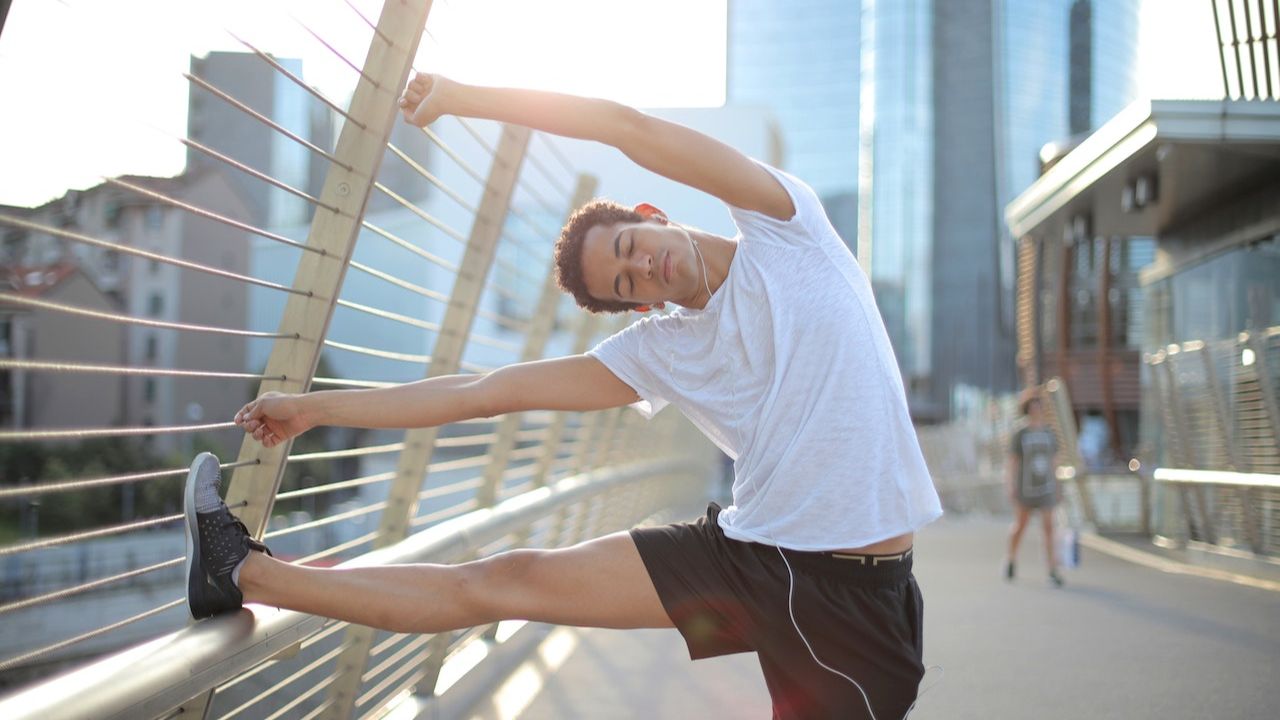
Neck Stretch
The neck stretch is an important exercise for athletes to improve neck flexibility and alleviate tension in the neck muscles. Athletes often engage in intense physical activities that put strain on their necks, making them susceptible to neck injuries. By incorporating neck stretches into their routine, athletes can reduce the risk of such injuries and promote overall neck health.
Here are four reasons why neck stretches are crucial for athletes:
Preventing neck injuries: Regular neck stretching helps strengthen the muscles surrounding the neck, reducing the likelihood of strains, sprains, and other neck injuries.
Improving range of motion: Neck stretches enhance flexibility, allowing athletes to move their necks more freely, which is especially beneficial in sports that require quick head movements.
Relieving muscle tension: Neck stretches can help relieve tightness and tension in the neck muscles, promoting relaxation and reducing discomfort.
Enhancing performance: A flexible neck allows athletes to maintain proper form and technique during various physical activities, leading to improved overall performance.
Frequently Asked Questions
What Are Some Alternative Stretches for Athletes With Tight Hip Flexors?
Some alternative stretches for athletes with tight hip flexors include hip mobility exercises such as hip circles, lunge stretches, and pigeon pose. These exercises can help improve flexibility, relieve tension, and increase range of motion in the hip area.
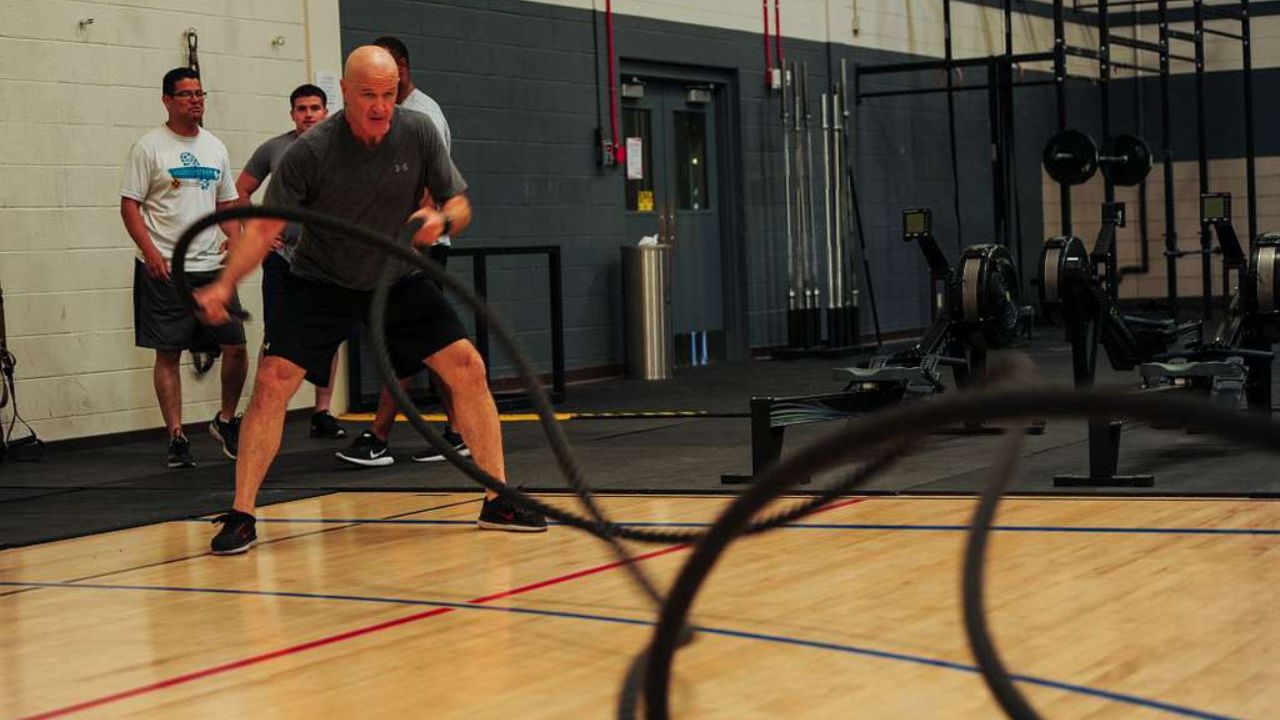
For optimal flexibility, athletes should perform stretches regularly. The frequency of stretching will depend on individual needs, but incorporating stretching into a regular training routine is important for maintaining and improving flexibility, which is crucial for athletes.
Can These Stretches Help Prevent Common Sports Injuries?
Prevention strategies are an essential component of sports injury risk management. Regular stretching, such as the top 12 essential stretches for athletes, can help improve flexibility and range of motion, which may reduce the risk of common sports injuries.
Are There Any Modifications or Variations of These Stretches for Athletes With Limited Mobility?
Modifications and variations of stretches can be beneficial for athletes with limited mobility, allowing them to still experience the benefits of stretching. These modifications can help improve flexibility, range of motion, and prevent injuries.
Recommended warm-up exercises before performing stretches are essential for athletes. Incorporating dynamic stretches into the warm-up routine can help improve flexibility, increase blood flow, enhance performance, prevent injuries, and optimize muscle activation.
 Mobility trainingHome Fitness RecoverySports Injury PreventionPersonal Physical TherapyOrthopedic SolutionsPrivacy PolicyTerms And Conditions
Mobility trainingHome Fitness RecoverySports Injury PreventionPersonal Physical TherapyOrthopedic SolutionsPrivacy PolicyTerms And Conditions
